At the end of July, Andrea and I joined our friends Heather and Roy for a week of hiking in the Rocky Mountains, at Mt Assiniboine Provincial Park. The park is on the British Columbia side of the provincial boundary but we went in by helicopter from the Alberta side. Our first night was car-camping at Spray Lake Provincial Park (Alberta) and the next morning we went to the nearby heli pad for our 10-minute flight into Assiniboine.
In March 2010 Andrea and I had spent several days skiing in Mount Assiniboine Park. We came in by helicopter, stayed at the Park’s Naiset Huts and skied out 28 km. A wonderful experience and we were keen to see the park in the summertime. See below for some winter:summer comparison photos.
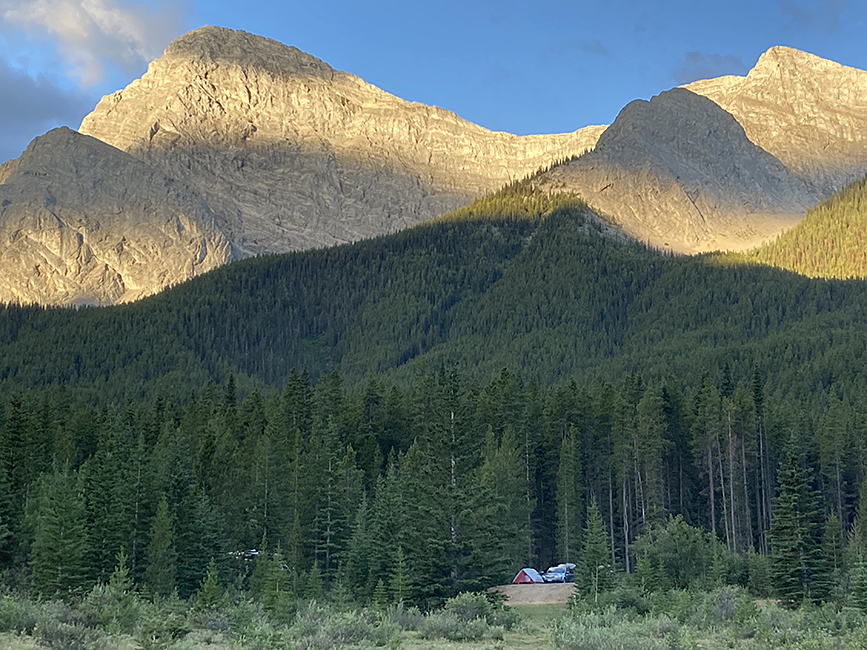
Our campsite at Spray Lake Provincial Park on the Alberta edge of the Rockies.
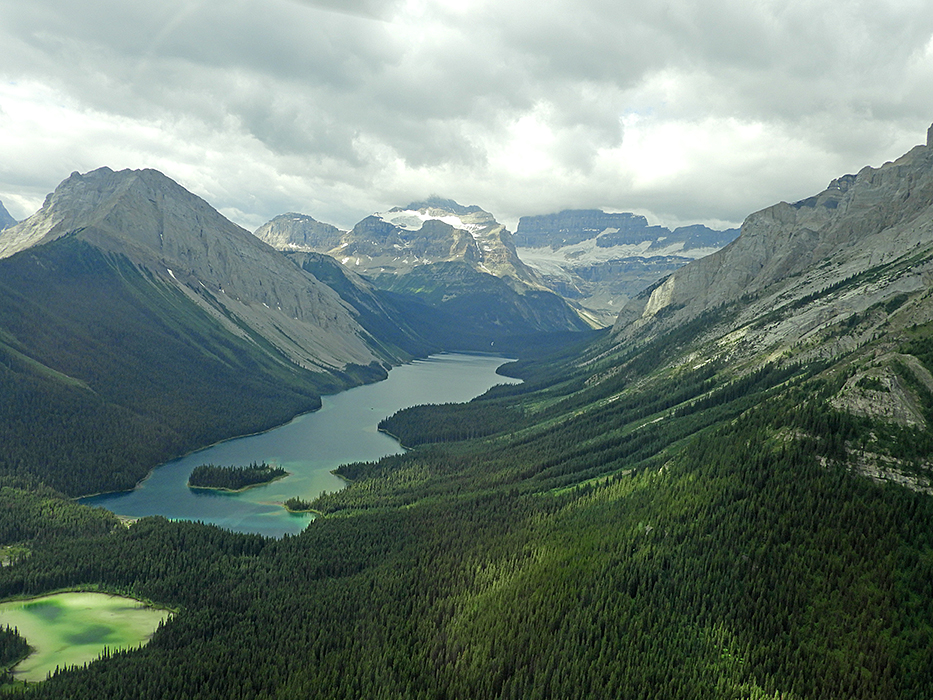
View of Marvel Lake from the helicopter as we headed across the Rocky Mountains.
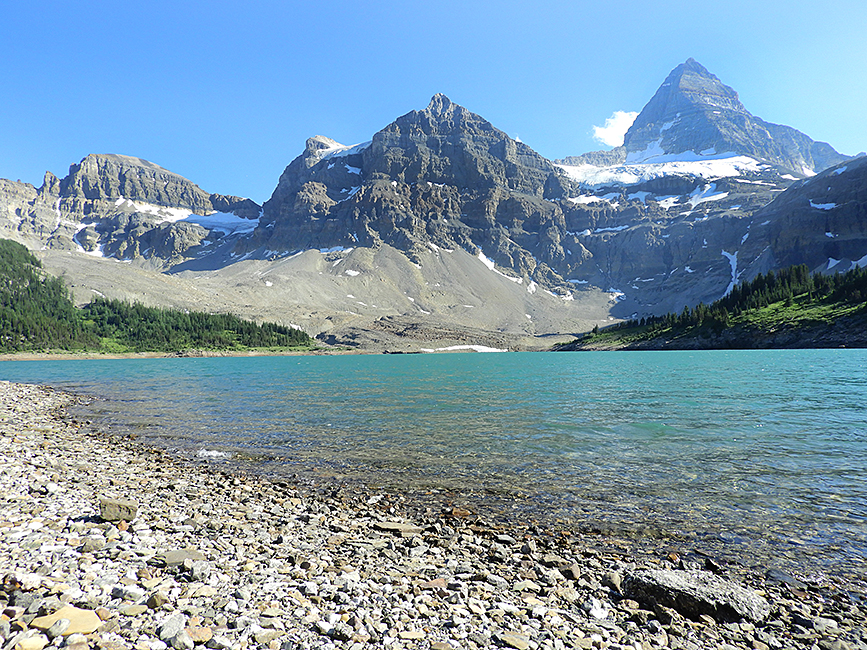
With its Matterhorn spire, Mount Assiniboine is one of the most awesome peaks in the Rocky Mountains. At 3,618 m (11,870 ft), it is the third highest peak in the Canadian Rockies. The summit is 1,525 m (5,003 ft) above Lake Magog.
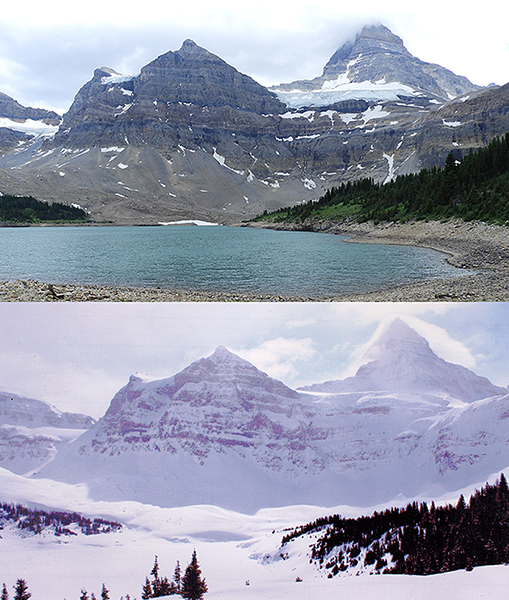
Summer and Winter – Mount Assiniboine in August 2024 and March 2010.
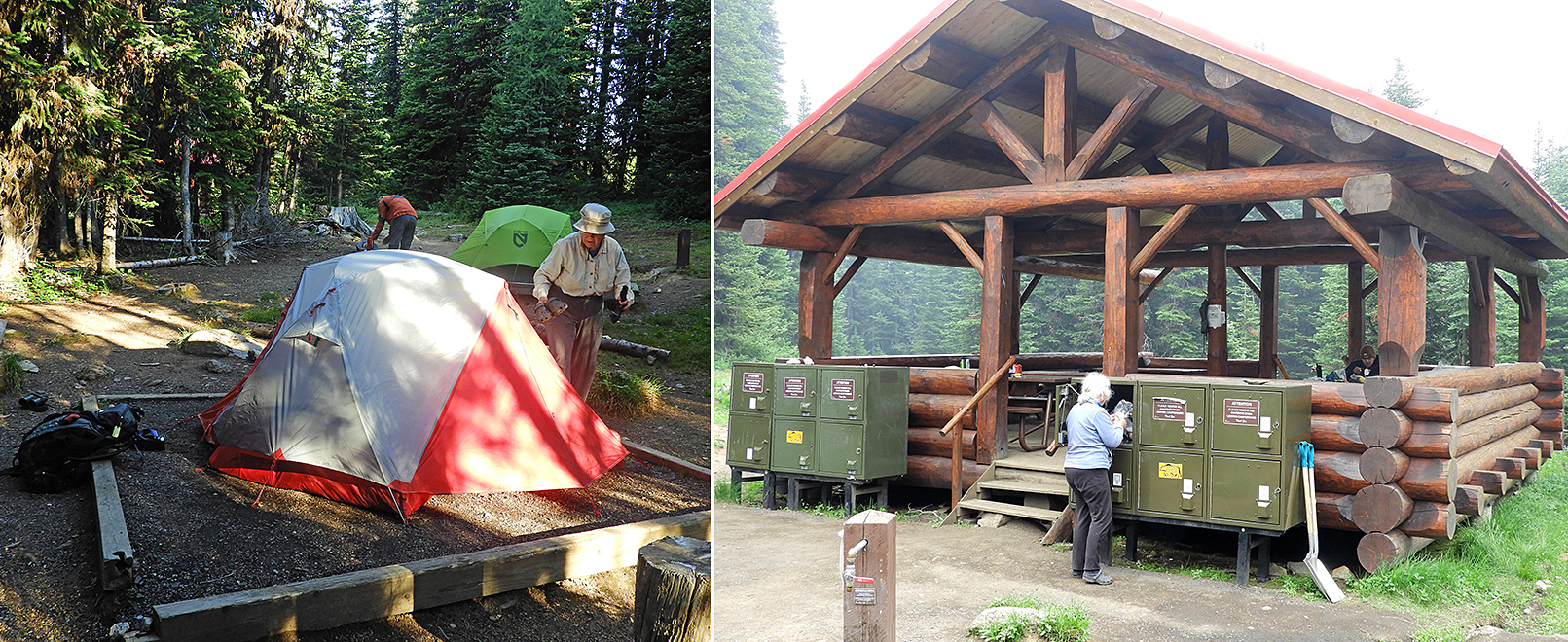
Our tents at Magog Lake campsite. The cooking shelter has bear-proof lockers where we stored our food and cooking gear.
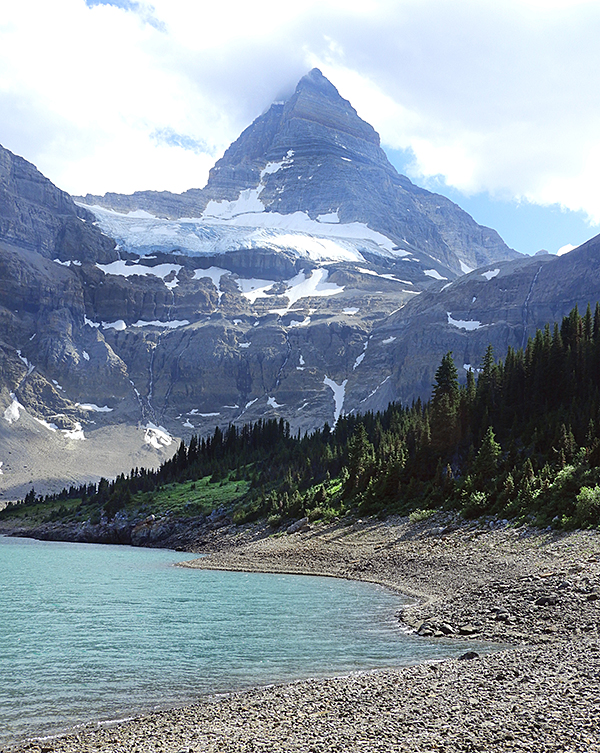
Our first hike was along the shores of Magog Lake to the base of Assiniboine peak.
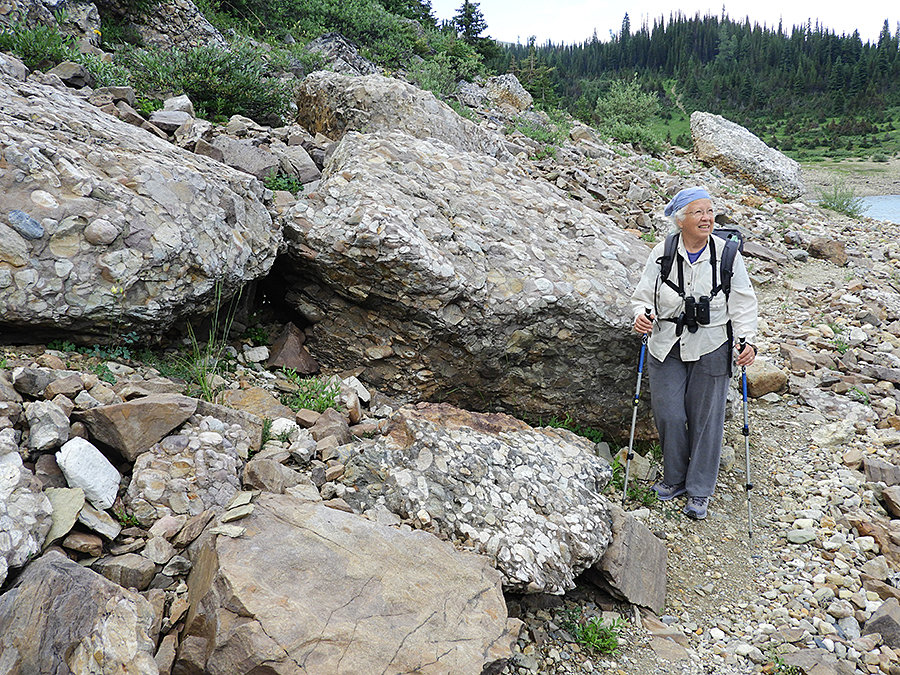
Huge boulders of intriguing conglomerate rock hug the shoreline of Magog Lake.
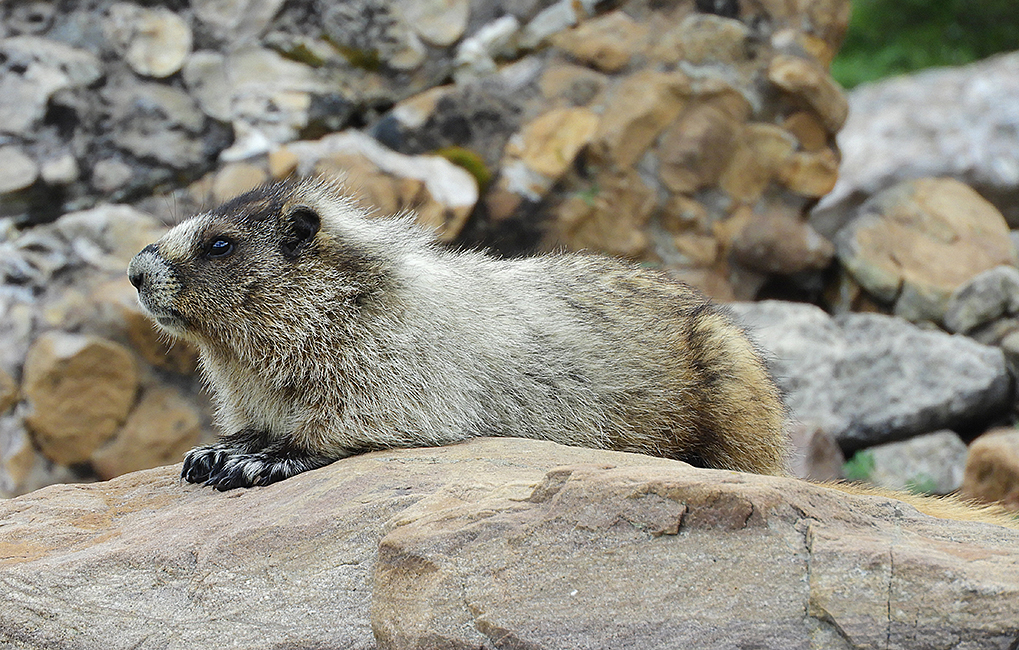
A Hoary Marmot on the slopes above Magog Lake.
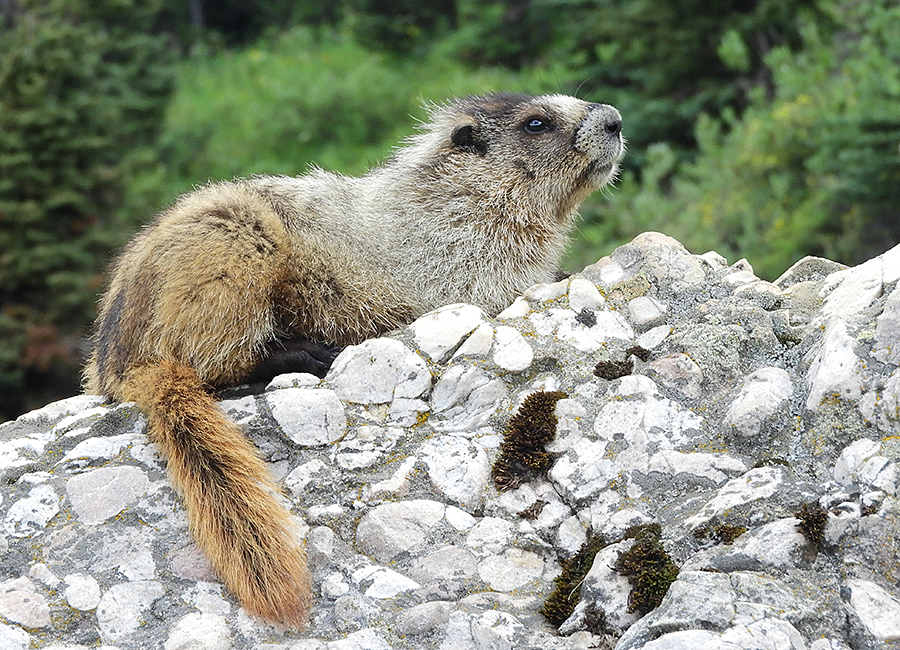
Another Hoary Marmot at Magog Lake.
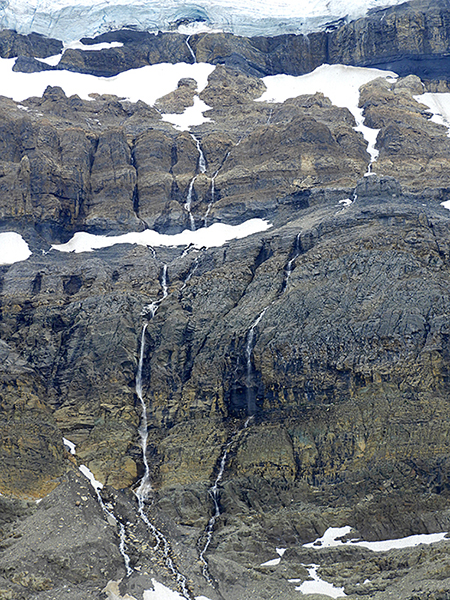
Lovely waterfalls coming off the high glacier on Mt. Assiniboine.
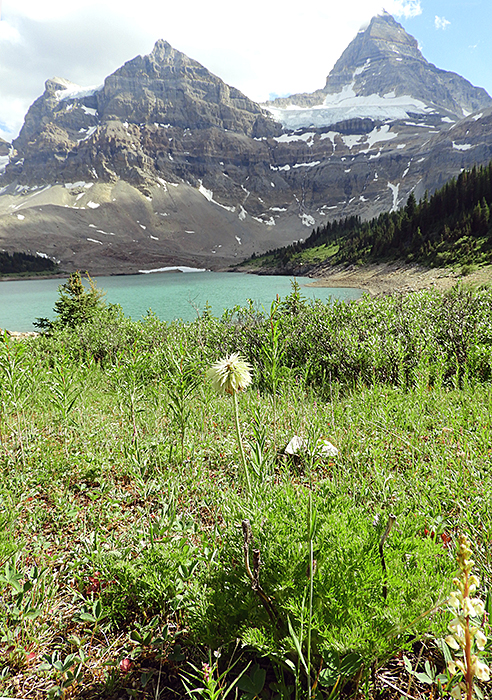
Our visit in mid-summer was a good time to enjoy the alpine wildflowers. We were too late to see the flowers of this mop-top (Anemone occidentalis), but the seed heads are very attractive too.
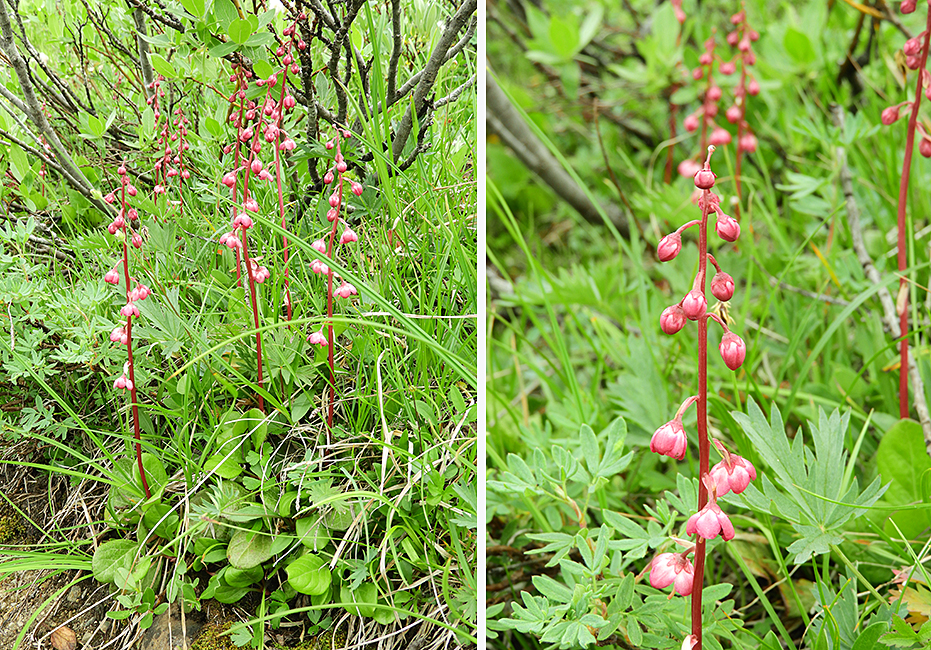
Pink Wintergreen (Pyrola asarifolia) is a fairly common little herb in the sub-alpine zone.
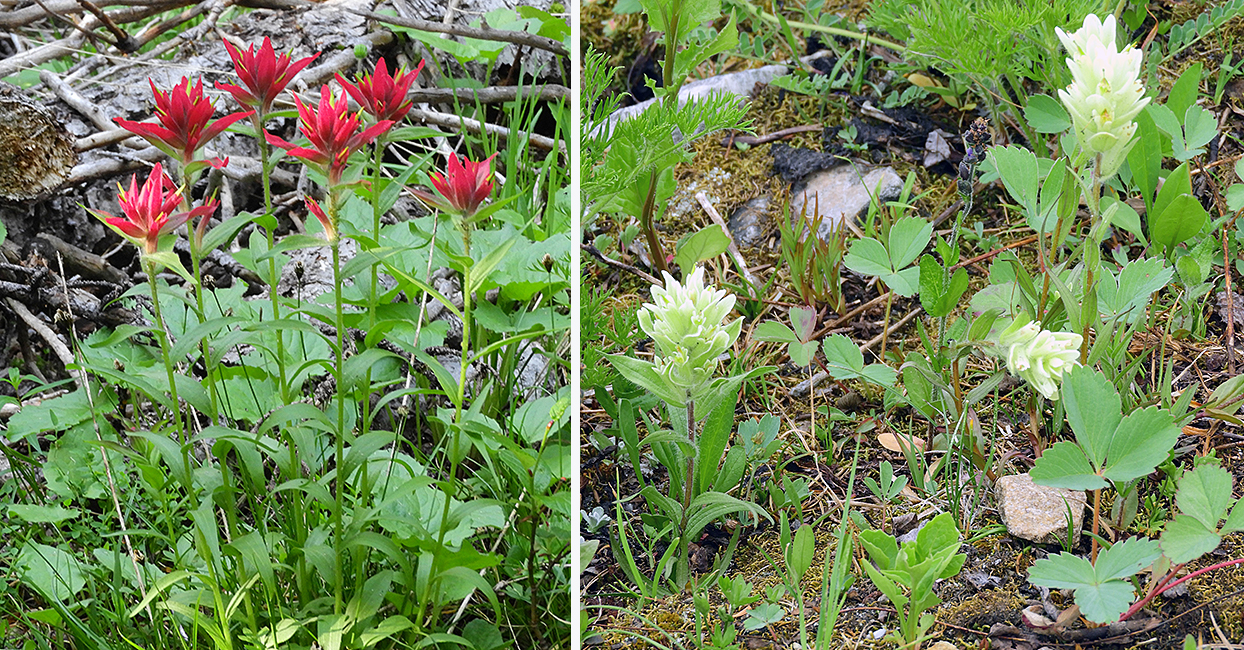
Paintbrush (Castilleja spp.) is a diverse and common plant across most of British Columbia. They tend to hybridize so nailing down the species can be tricky. The red one (left) is probably C. miniata. We were pleased to find the less common white one, probably C. occidentalis.
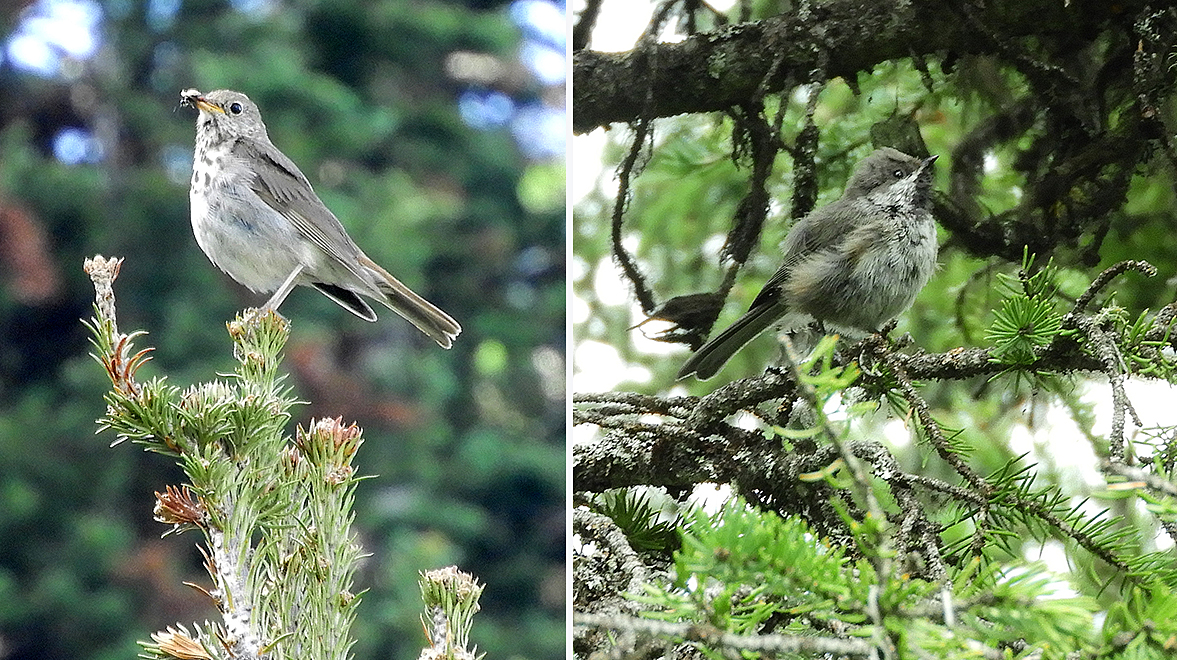
Two common species in the sub-alpine forests – Hermit Thrush (left) and Boreal Chickadee (right). Both are uncommon at low elevations in BC. It was a joy to go to bed in the evening and wake up in the morning hearing the lovely flute-like song of the Hermit Thrush.
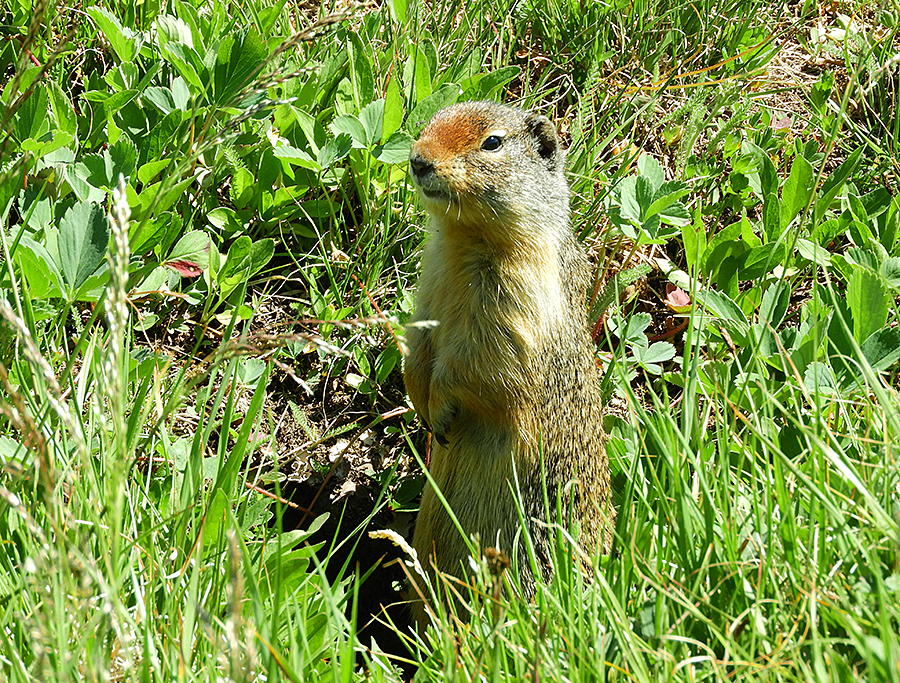
Columbian Ground-squirrels are one of the most common mammals in Assiniboine.
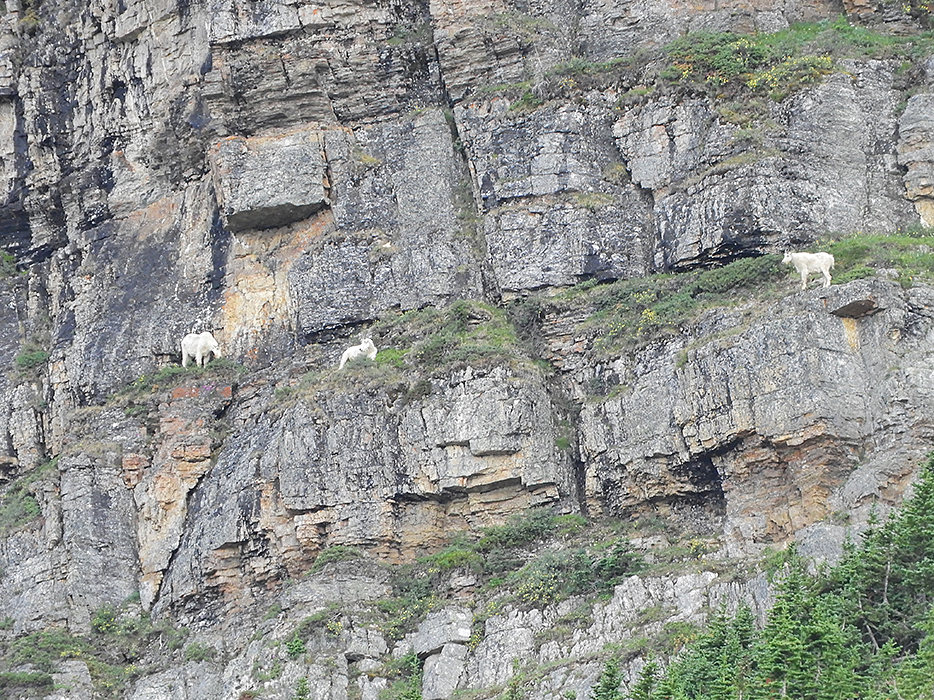
The only Mountain Goats we saw were these three, perched precariously on the cliffs adjacent to Mount Assiniboine.
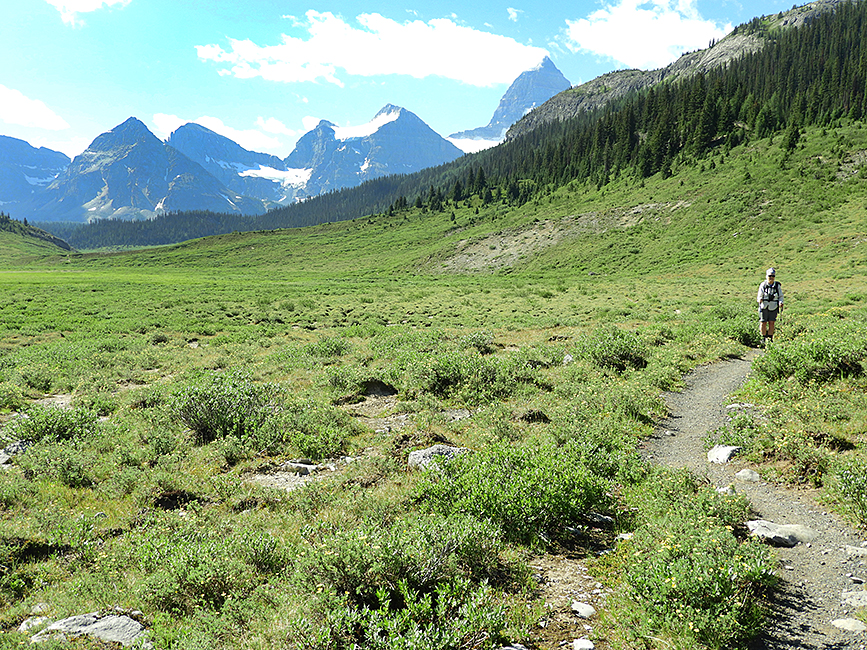
On our second day in the park we hiked 5 km through the huge expanse of Og Meadows to Og Lake
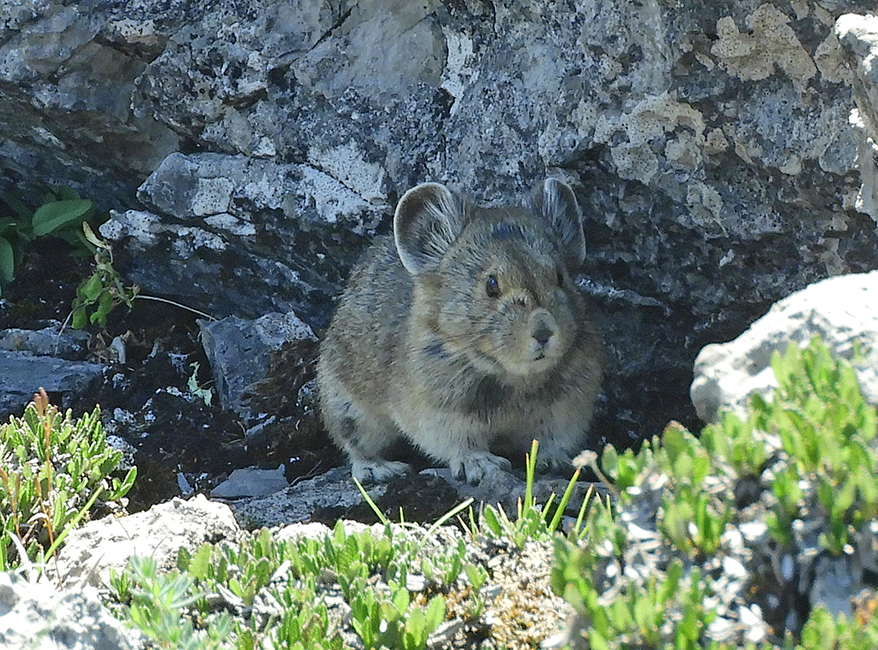
Pikas live in the rock piles of the mountain slopes. Although they look like guinea-pigs they are actually Lagomorphs – relatives of rabbits and hares. They don’t hibernate but survive through the long alpine winters by stockpiling dried grass and herbs. So in summer one sees them carrying mouthfuls of vegetation and making little haystacks to dry in the sun outside their rock-crevice homes.
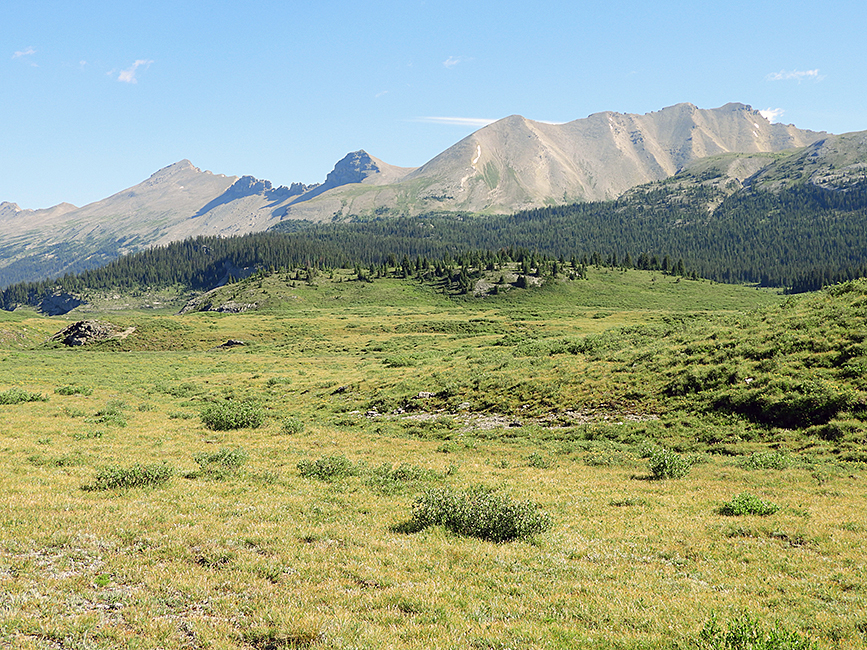
Og Meadows. We kept a close lookout for Grizzly Bears here but didn’t see one. A few days later, however, some hikers encountered a young Grizzly here.
On our second day in the park we took advantage of the continuing good weather to venture up into higher elevations – up to Nub Peak via scenic lookouts along the way.
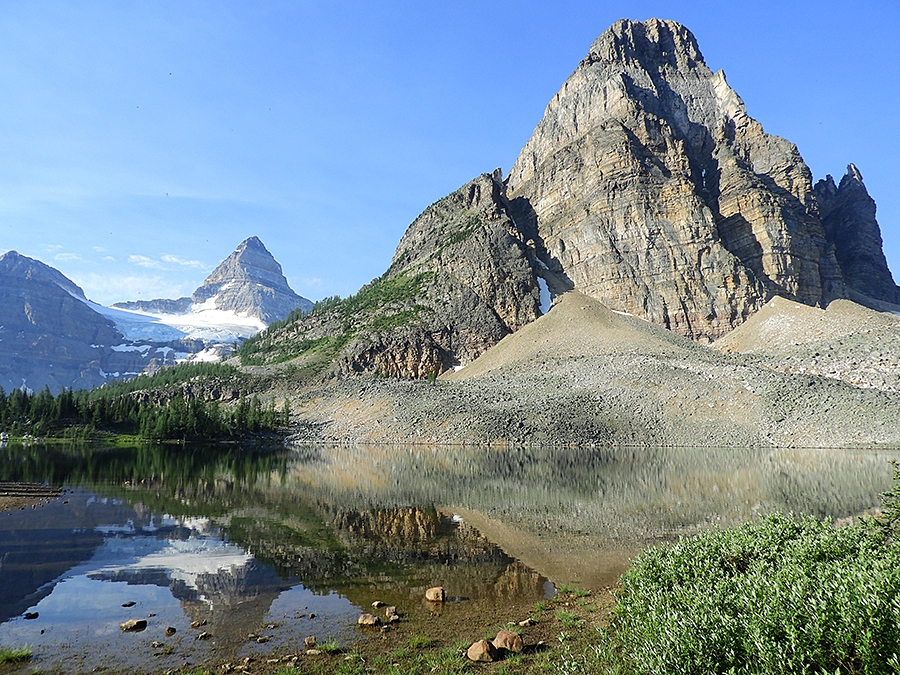
Sunburst Peak and Sunburst Lake with Mount Assiniboine behind.
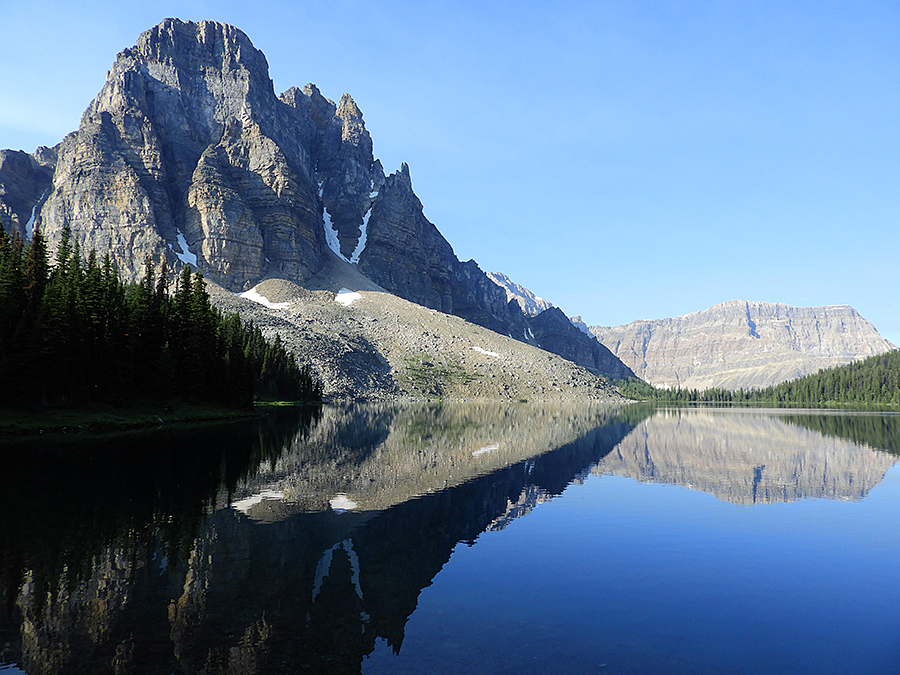
Sunburst Lake and Sunburst Peak
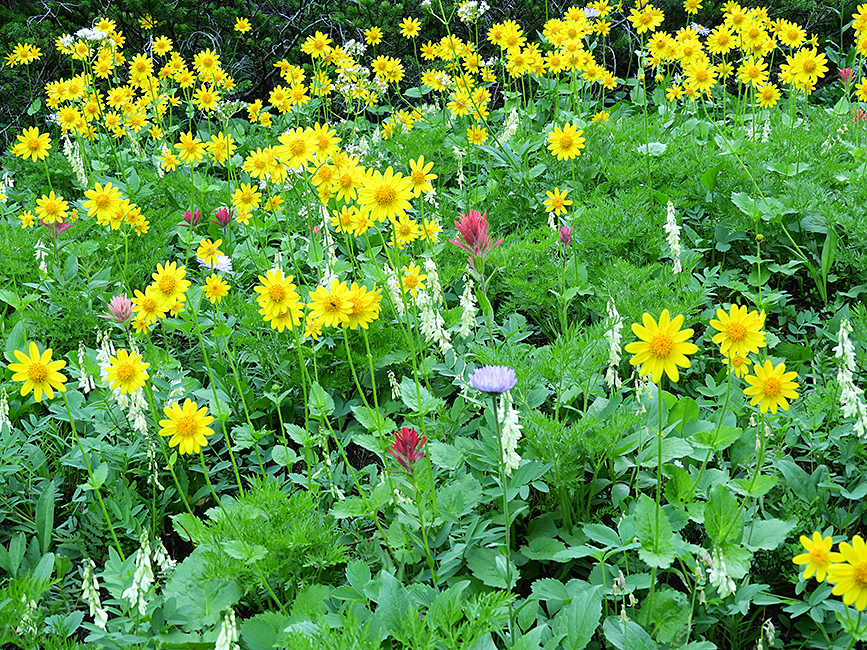
Throughout the sub-alpine areas there are numerous meadows and glades with lovely displays of wildflowers -mainly the yellow arnicas, red paintbrush, blue fleabane asters and white sweet-vetch.
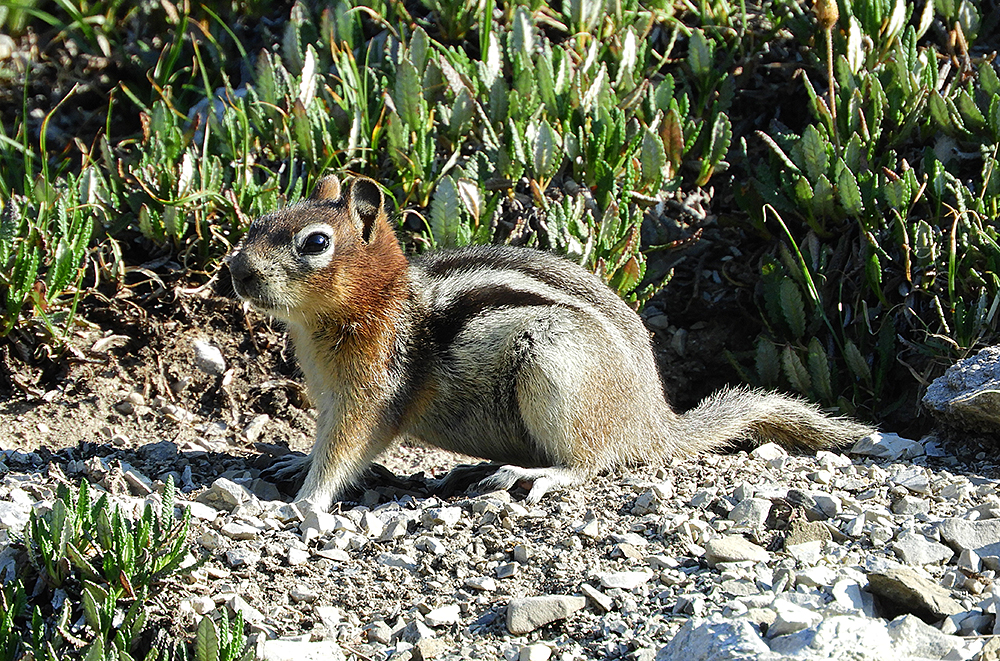
A Golden-mantled Ground-squirrel.
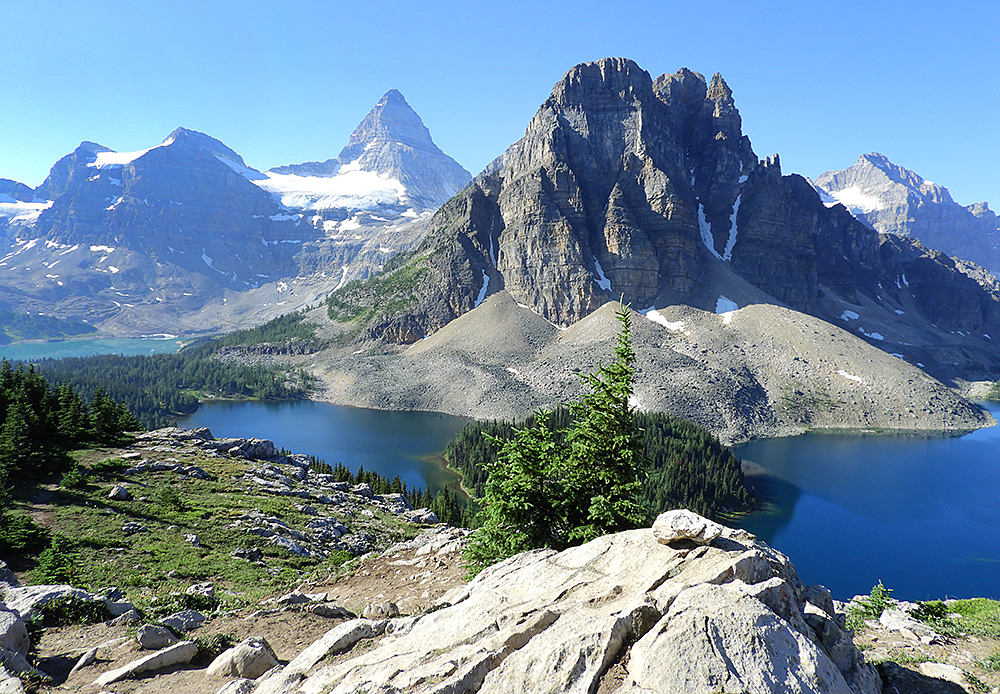
The view from the Niblet lookout, along the route up to Nub Peak. From left to right the lakes are Magog in the distance, Sunburst and Cerulean.
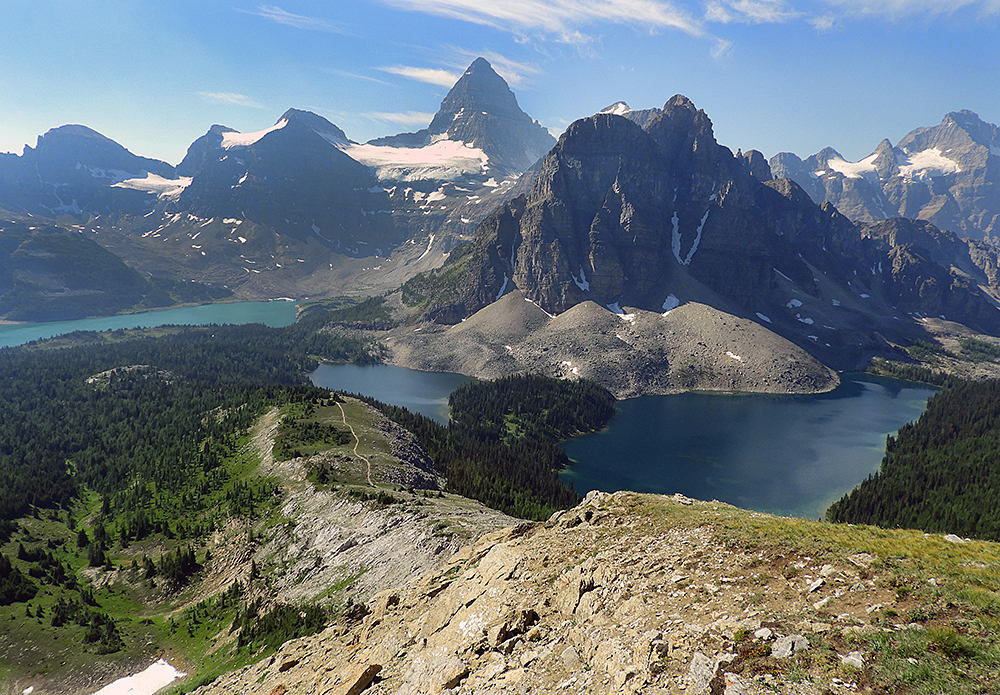
Stunning views from the trail up to Nub Peak.
In the higher alpine areas the vegetation is sparse but with many specialized alpine plants. Here are a few ……
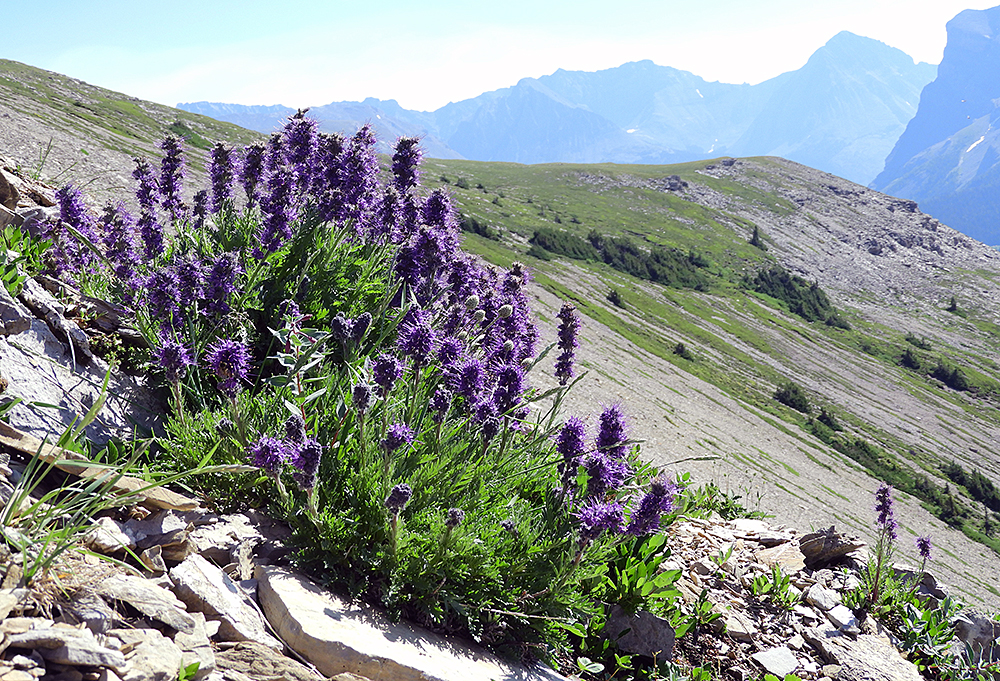
Lyell’s Phacelia (Phacelia lyellii) is endemic to the southern Rocky Mountains in BC.
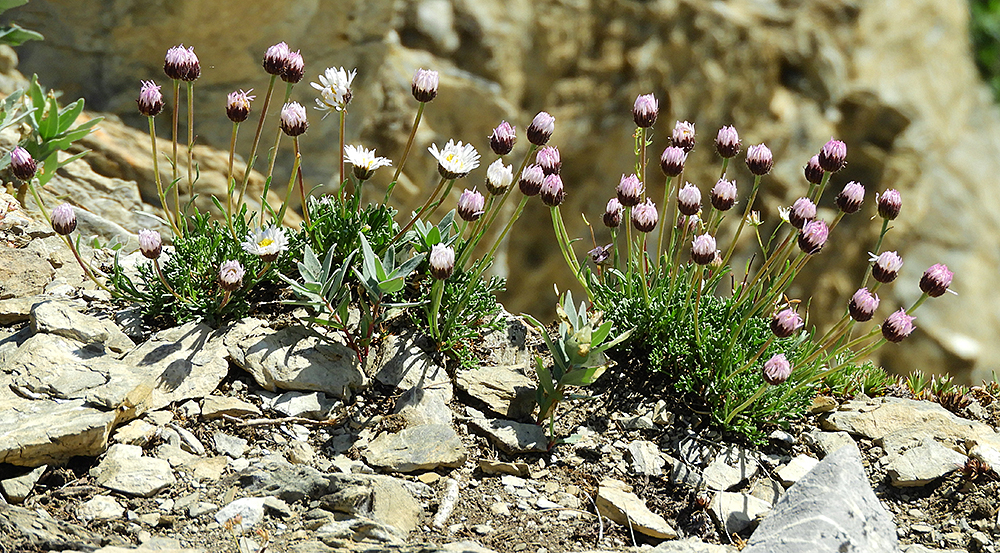
Cut-leaf Fleabane (Erigeron compositus).
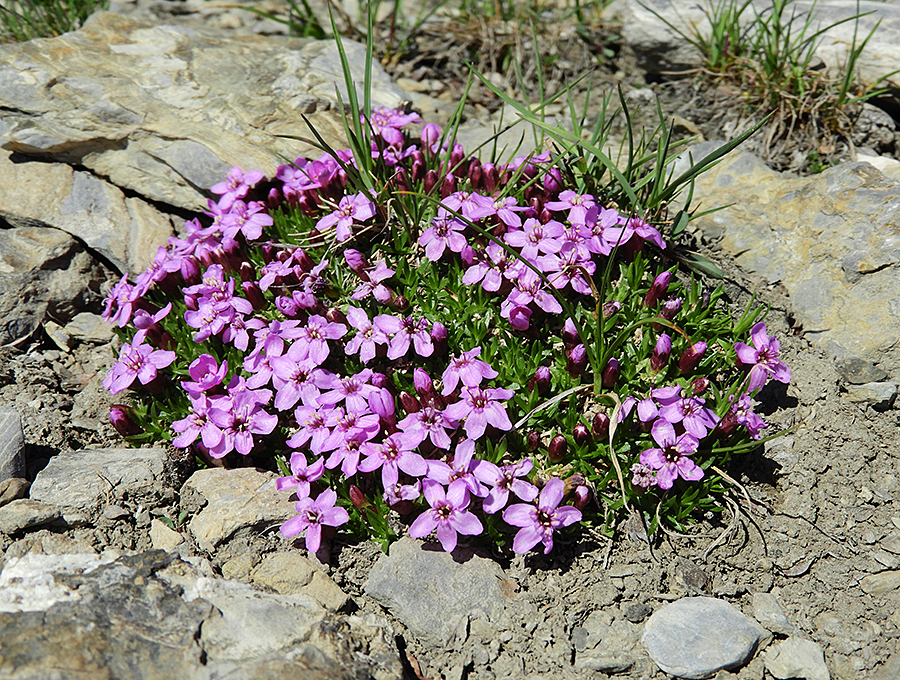
Moss Campion (Silene acaulis) is commonly found in high alpine areas and also throughout the Arctic tundra. As a pioneer species growing on raw gravel it often provides a base for other plants to colonize, like the grasses in this cushion.
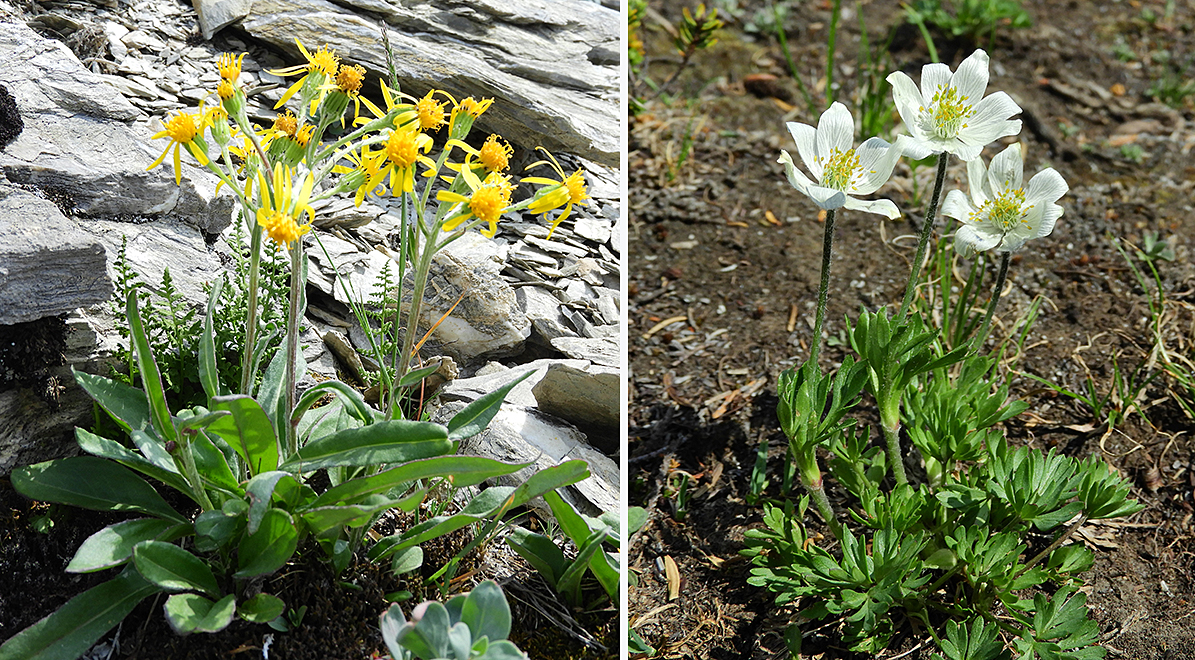
Two high alpine flowers – Black-tip Groundsel (Senecio lugens) on the left and Alpine Anemone (A. drummondii) on the right.
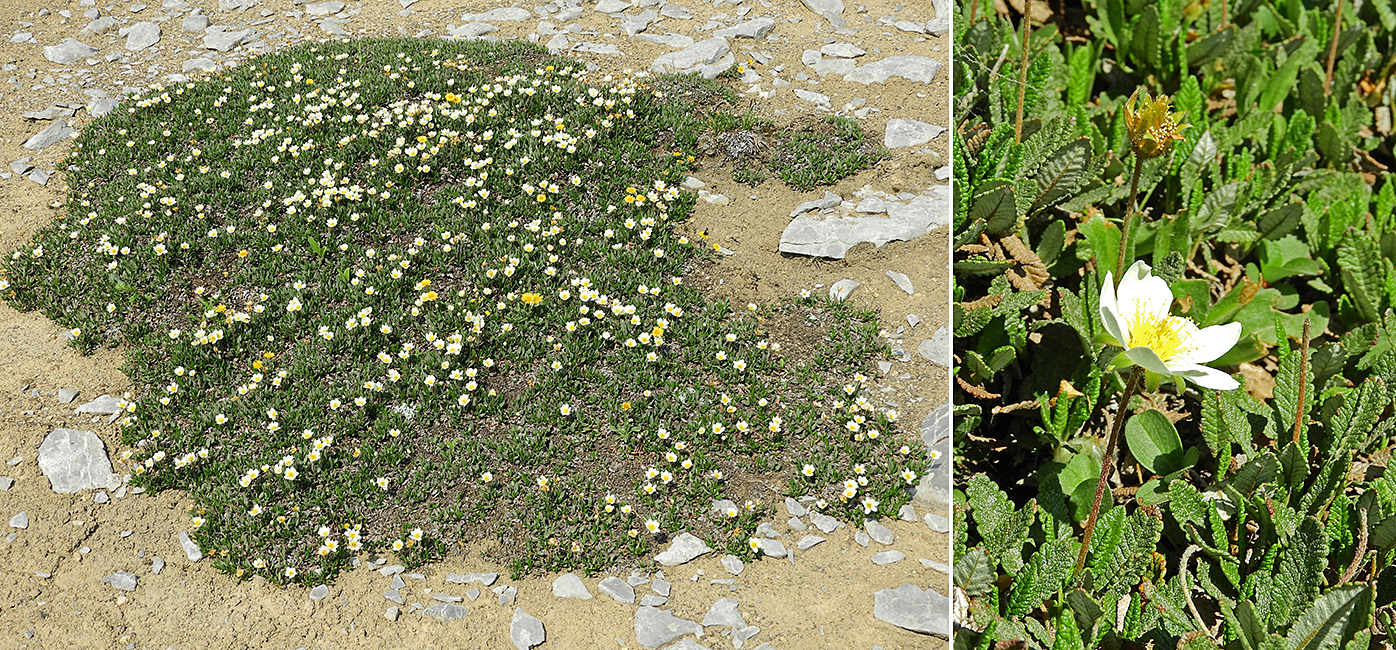
Mountain Avens (Dryas octopetala) is another high-alpine species that is also common throughout the Arctic tundra. Here it made extensive carpets in which other plants sometimes take root.
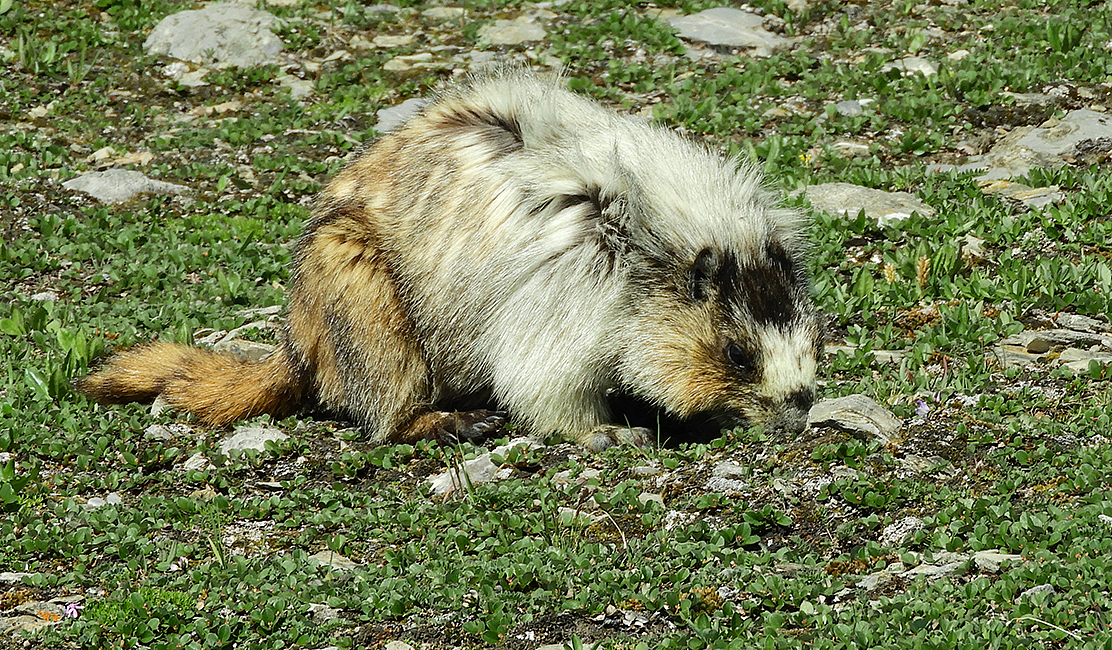
This big shaggy Hoary Marmot is probably an older animal – foraging in the high alpine area.
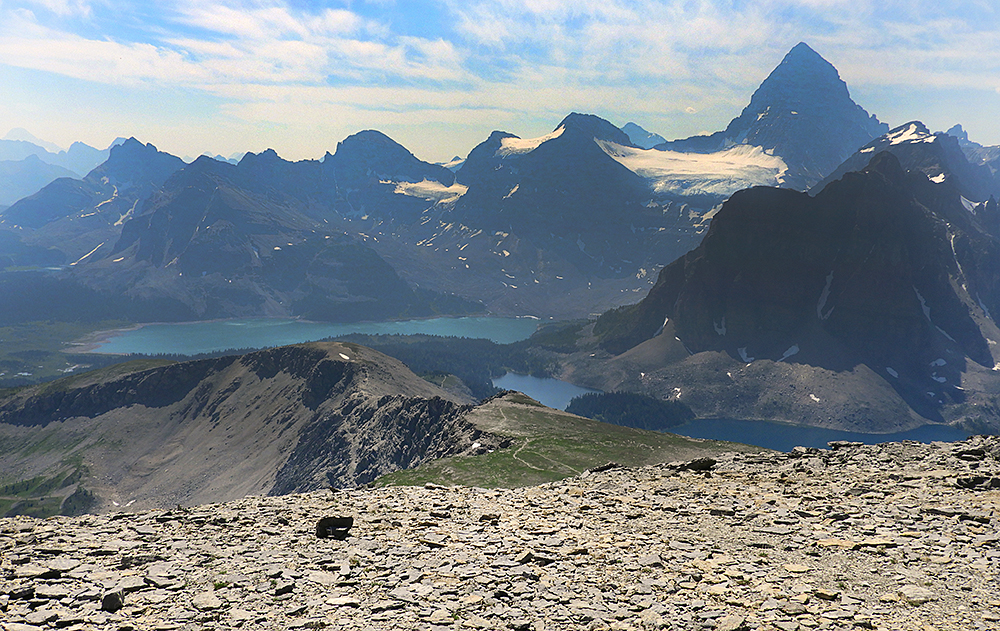
View from the summit of Nub Peak, at 2,746 m (9,009 ft).
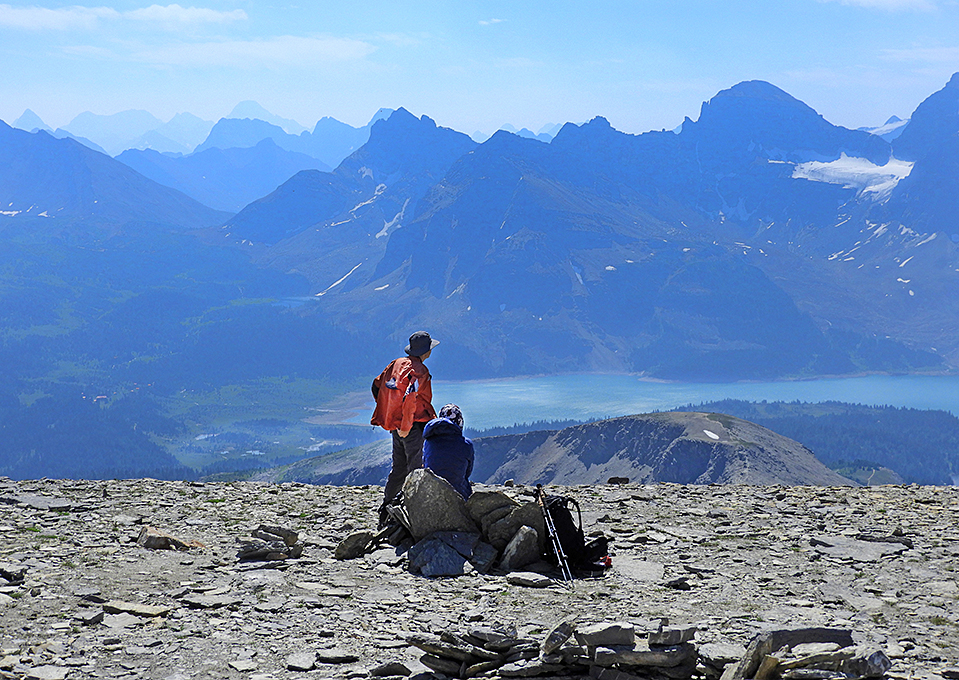
Roy and Heather at the summit of Nub Peak, with Magog Lake below and the red roofs of Assiniboine Lodge on the far left. Smoke from nearby wildfires was starting to drift into our area at this time.
On our third day we did another ambitious hike – close to 16 km round trip to Wonder Pass and beyond to the lookout over Marvel Lake. On this day the smoke from several fires was quite thick in our area, obscuring the views in many places.
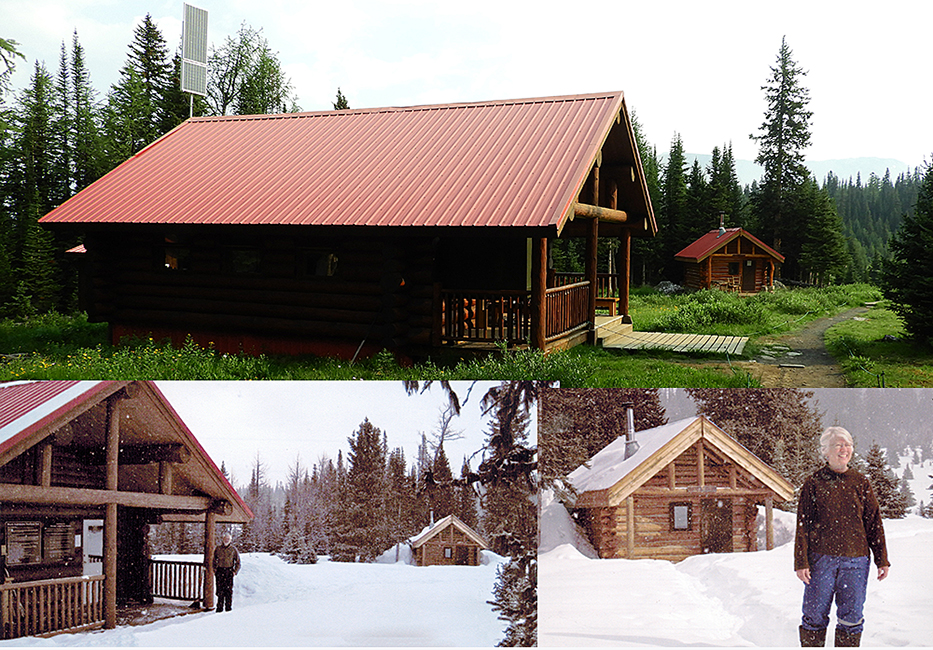
Summer and winter – the Naiset Hut cookhouse and the Jonesy Hut where we stayed in March 2010.
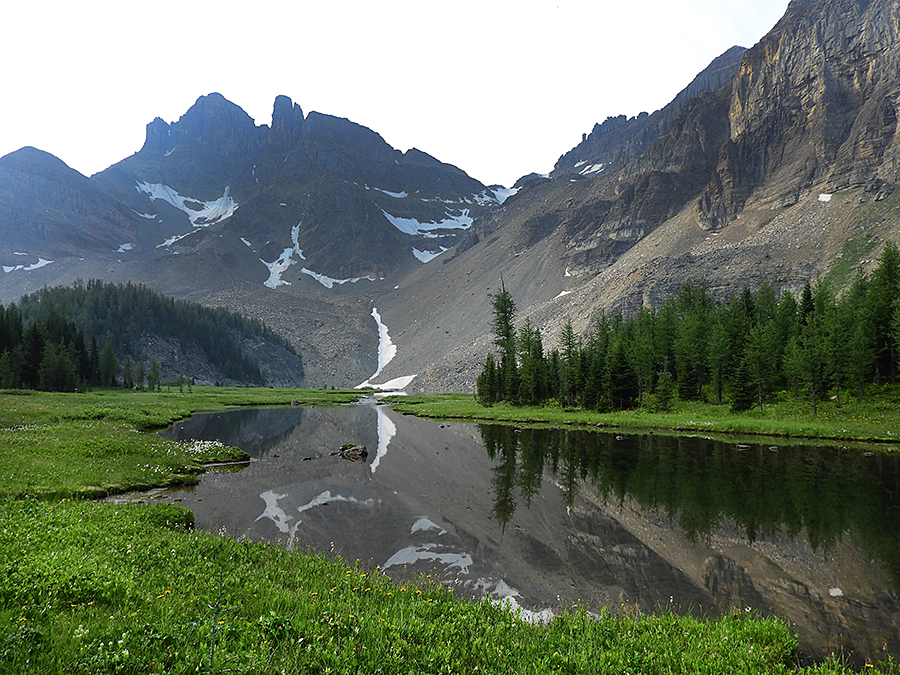
Beautiful Gog Lake on the trail up to Wonder Pass.
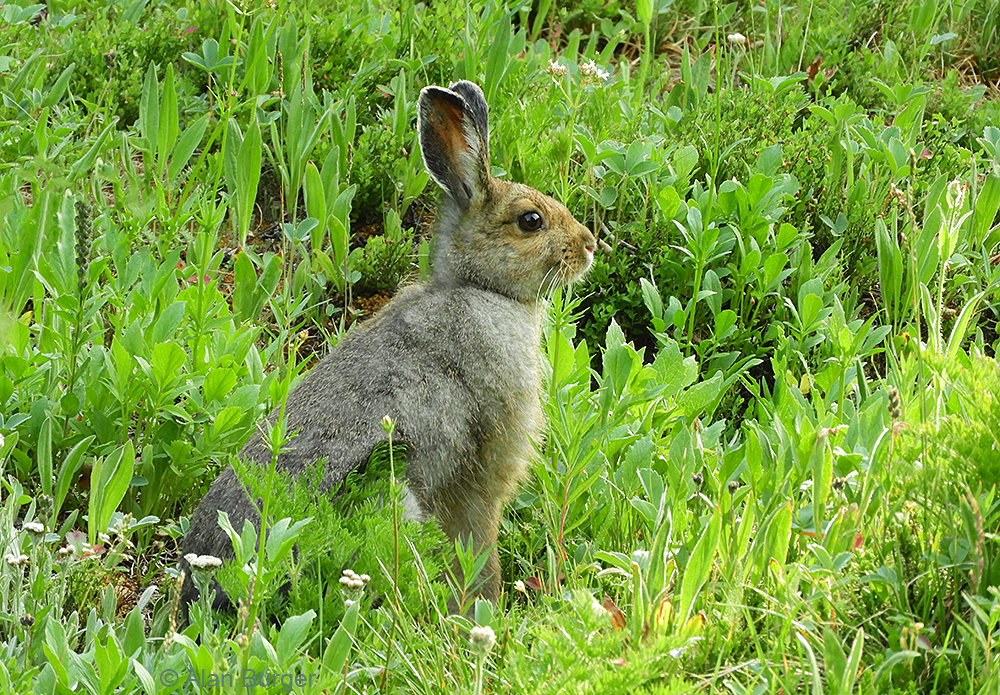
We encountered several Snowshoe Hares on our hikes. This one stayed long enough for a photo.
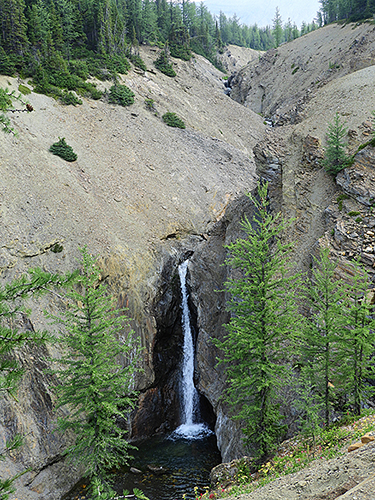
What a surprise to emerge from the Larch trees to see this gorgeous waterfall coming out of a deep canyon.

Unfortunately the smoke reduced the impact of the view from the Marvel Lake overlook. Mount Assiniboine is on the right.
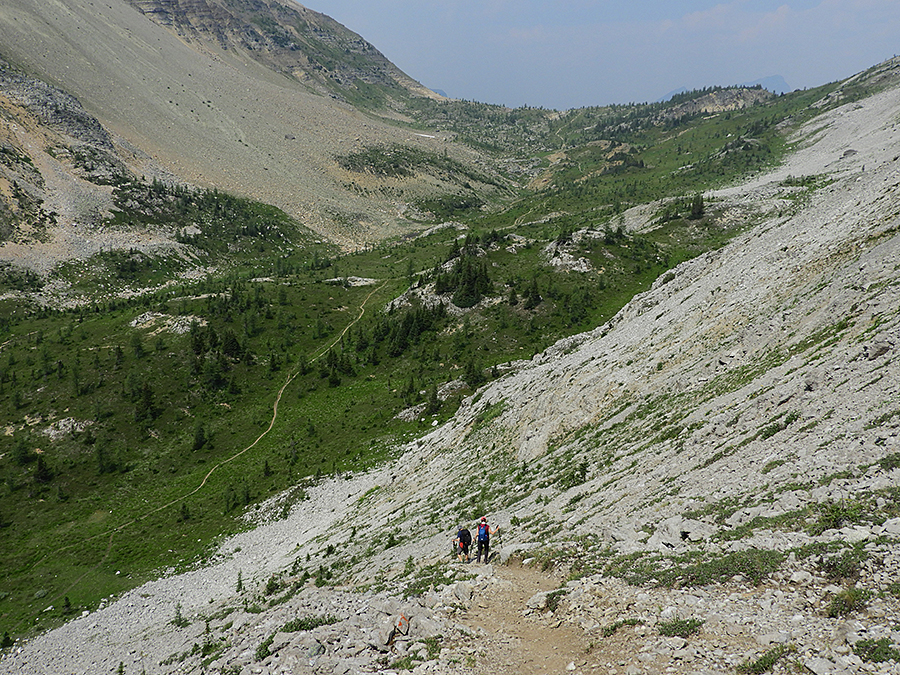
The route back to Wonder Pass (on the horizon) went down this very steep and slippery scree slope. A challenge for my creaky knees.
On our final full day of hiking we chose some more gentle routes and had a lovely day exploring flower-filled meadows, rocky ridges and lovely lakes – Elizabeth Lake, Chuck’s Ridge, Lizzie Meadows, Cerulean Lake and home via Sunburst Lake.
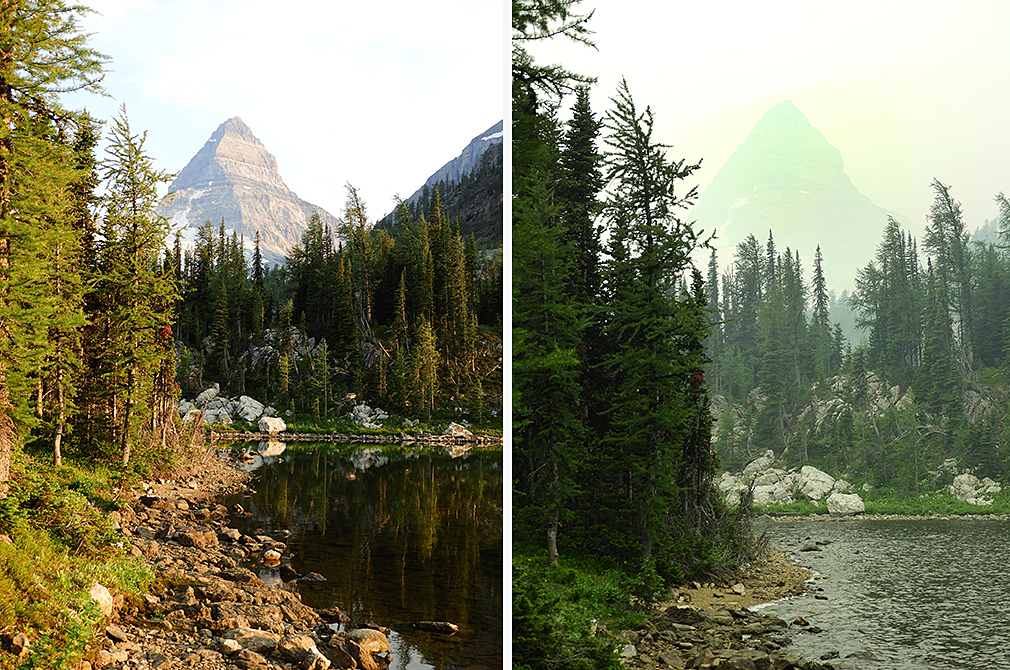
What a difference a day makes – views of Mount Assiniboine from Sunburst Lake. The photo on the left was at sunset on 3rd August and the one on the right was the next day when thick smoke from nearby wildfires filled the valley.
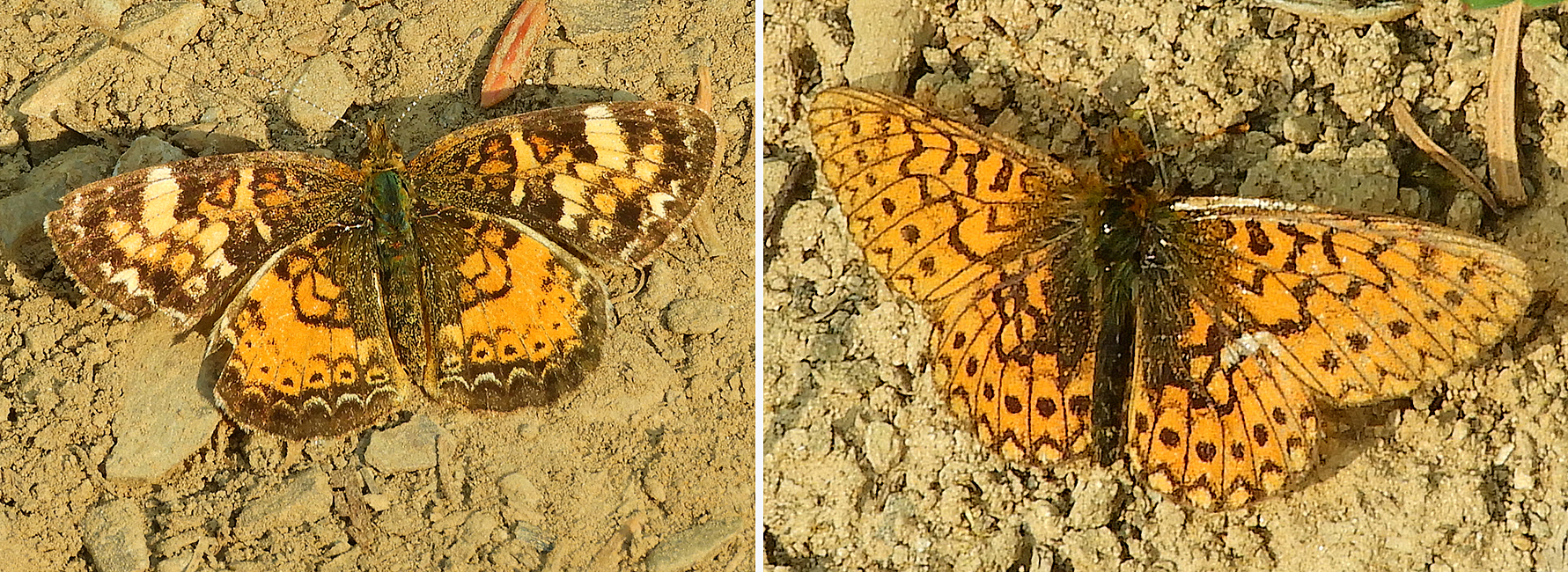
A couple of the lovely butterflies that were common in the alpine and subalpine areas: Northern Crescent (Phyciodes cocyta; left) and Bog Fritillary (Boloria eunomia; right).
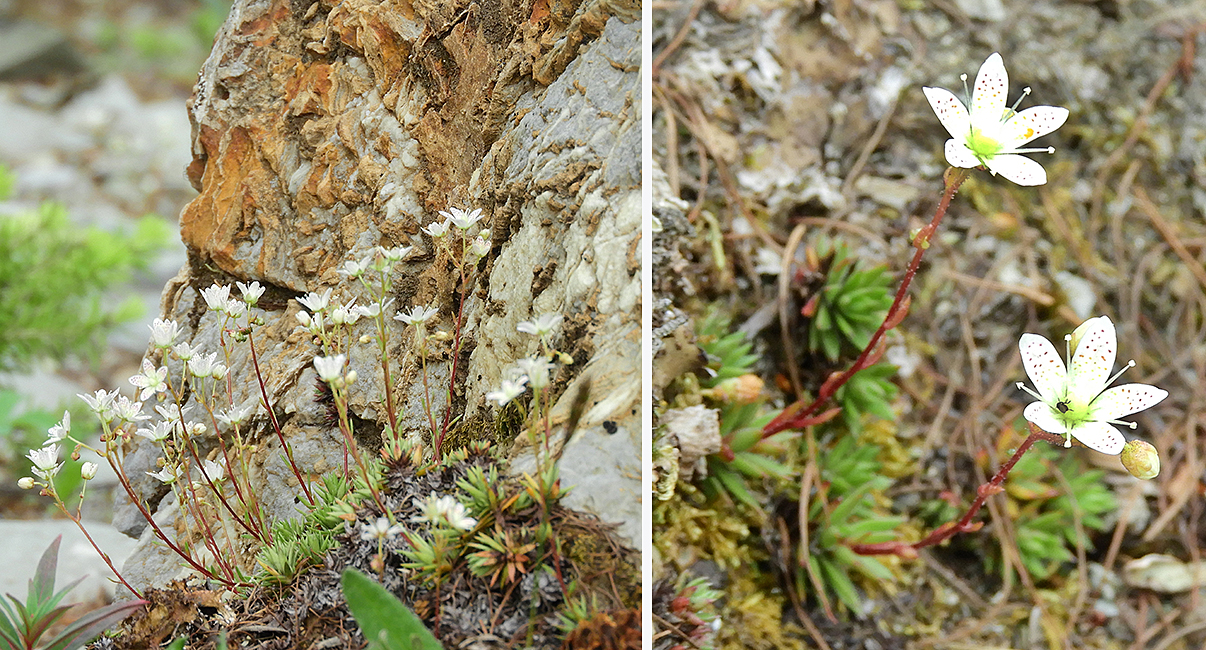
Growing on a rocky outlook, some Spotted Saxifrage (Saxifraga bronchialis).
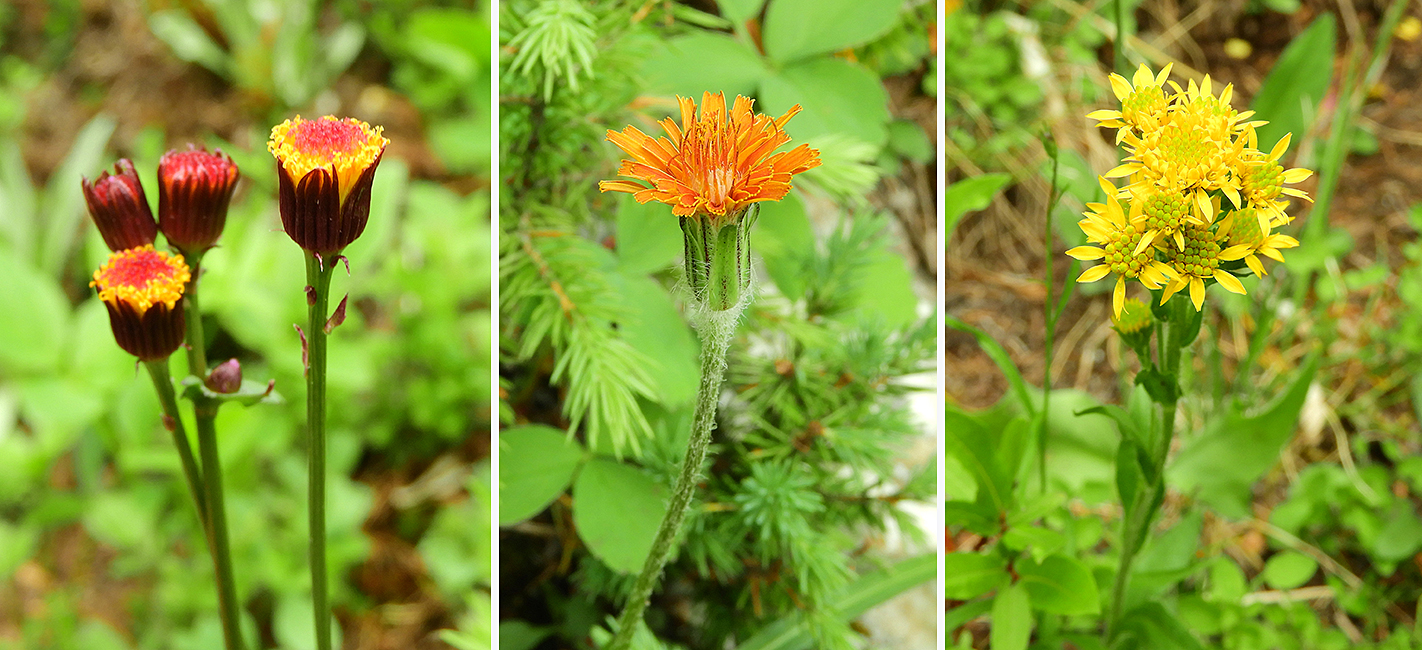
Three colorful daisy relatives: Alpine Groundsel (Packera pauciflora) on the left, Orange Agoseris (A. aurantiaca) centre and Arrowleaf Senecio (S. triangularis) right.
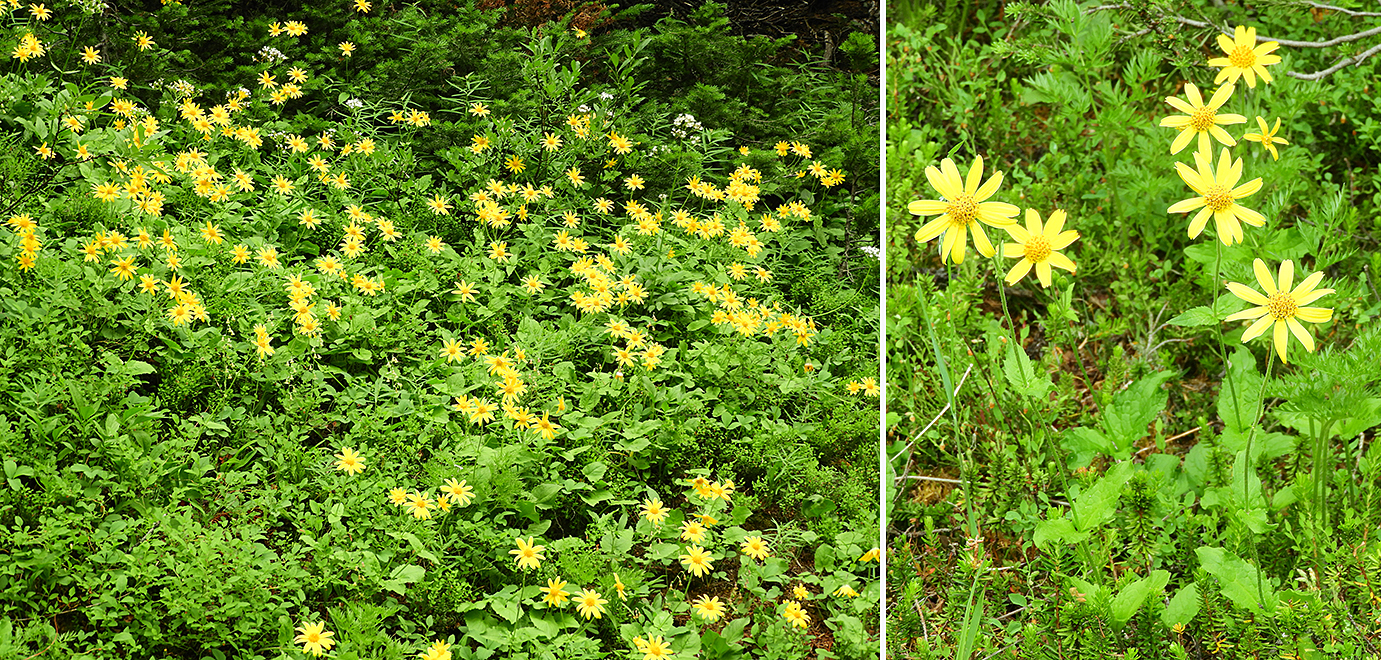
Most meadows were dominated by the yellow Broadleaf Arnica (A. latifolia).
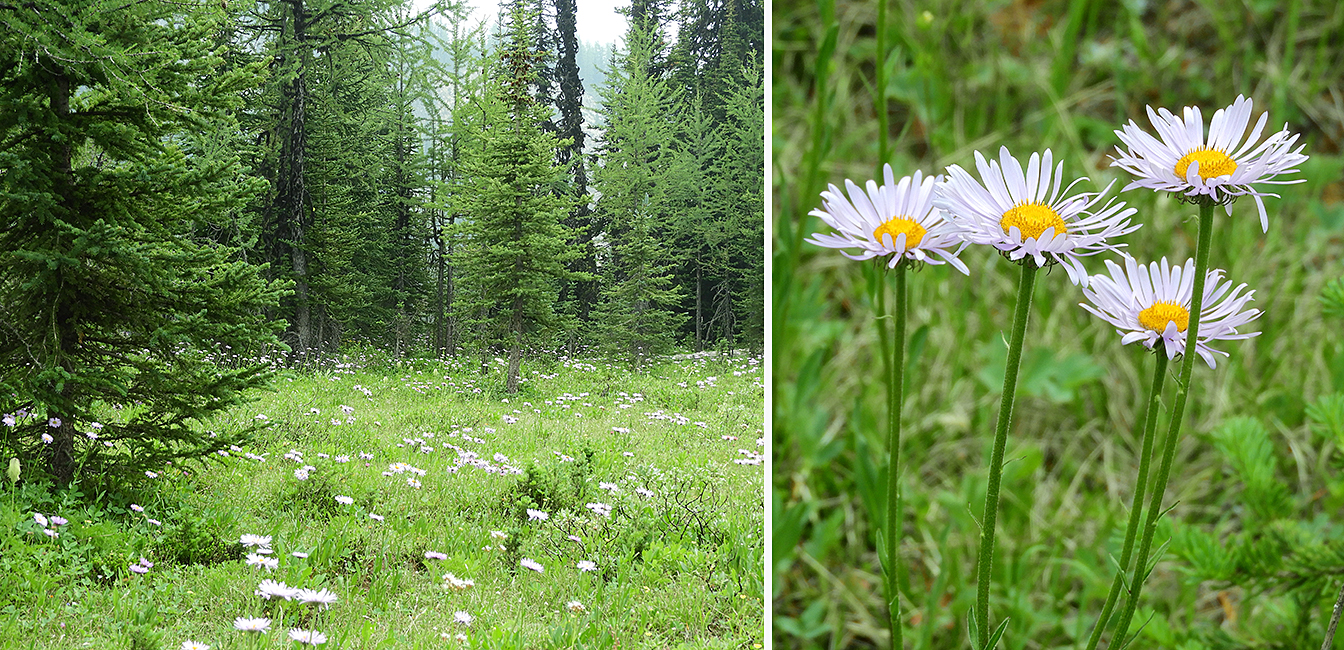
But some meadows were dominated by Subalpine Fleabane (Erigeron glacialis).
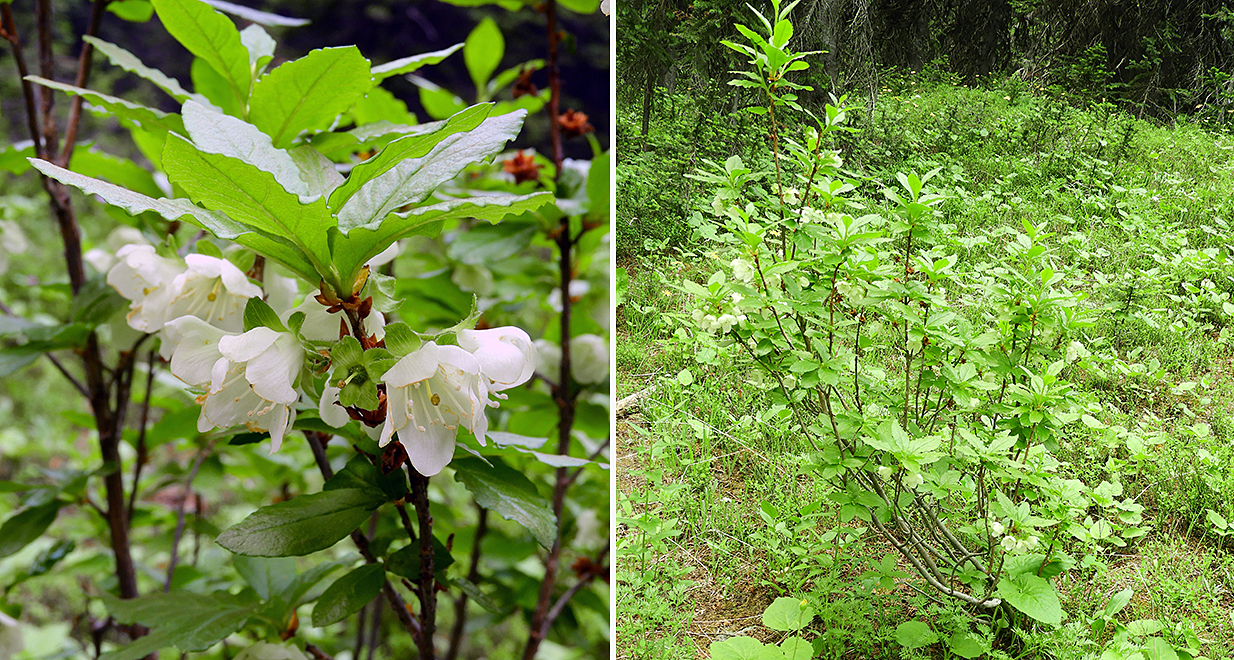
White-flowered Rhododendron (Rhododendron albiflorum) is a common shrub in the subalpine woodlands.
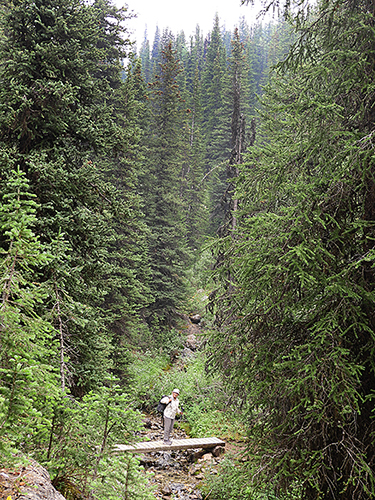
Andrea on the trail near Cerulean Lake.
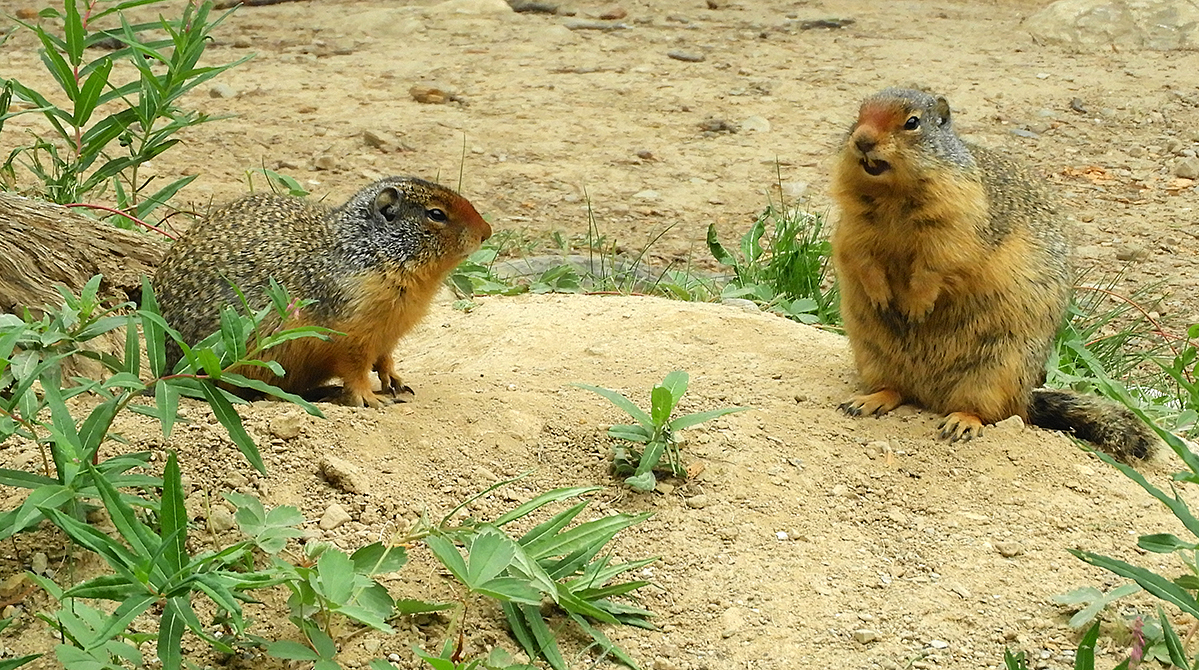
Columbian Ground-squirrels next to our campsite.
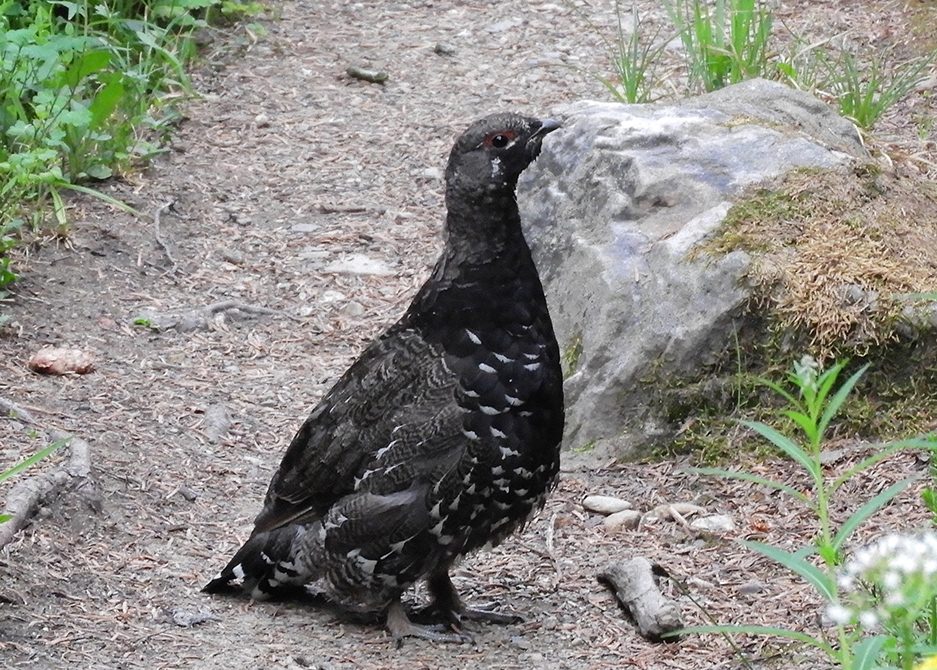
Spruce Grouse are usually common in the subalpine spruce forests, but on our hikes we had only a fleeting glimpse of one. On our last evening I took a stroll and this male grouse was right in the path. He even stayed long enough for me to warm up my failing camera battery and get a few photos.
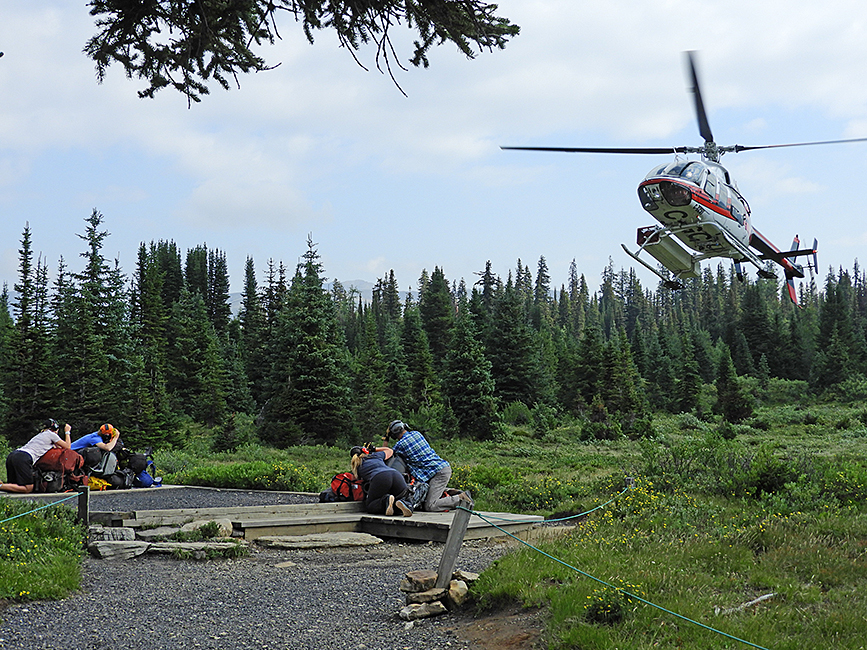
All too soon it was time to pack up and get the helicopter back to Alberta and then the long 7.5 hour drive home.
~~~~~~~~~~~~~~~~~~~~~~~~~~~~~~~~
